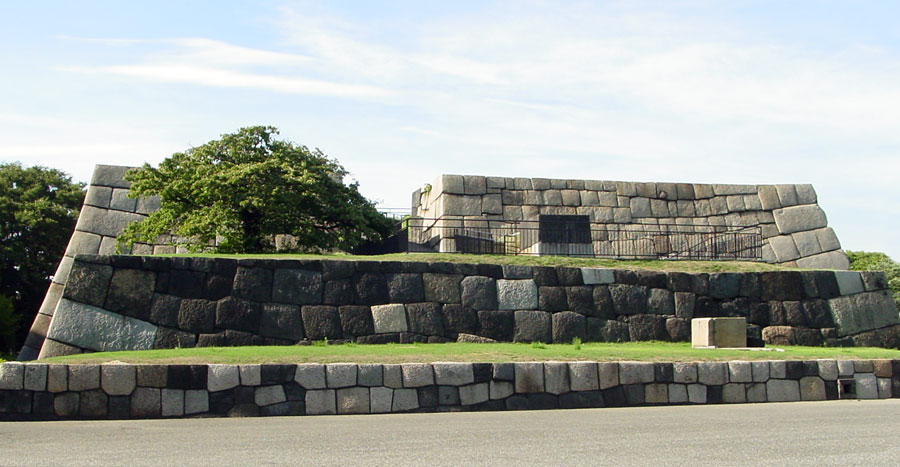The independent raised foundation upon which the
the principal tower *tenshu Vη,
was constructed. Usually approximately square shaped. The first tenshudai
of the late Medieval period are thought to have been made of earth alone, but
all those of the Edo period consisted of stone-faced earth walls *ishigaki
Ξ_. The incline of the tenshudai walls was relatively straight where built
on solid ground, but concave ramparts were preferred where the soil was weak.
This concave type was most common; the line of the curve is called *ougi-no-koubai
ξΜωz. Various methods of stone facing were used on the ramparts: (1)
a facing of rough, natural stones *nozurazumi
μΚΟ as seen at Matsuyamajou ΌRι, Ehime prefecture and Koufujou b{ι, Yamanashi
prefecture;@(2) partially dressed stones *uchikomihagi
Ε¬ as at Himejijou PHι, Hyougo prefecture;@(3)
well dressed and carefully shaped stone set in a well ordered arrangement *kirikomihagi
Ψ¬. Edojou ]Λι, Tokyo, is a good example. Gaps between large stones were filled
with irregularly shaped smaller stones kai-ishi Ξ.
The tenshudai
was not necessarily solidly packed but sometimes had an excavated interior that
might hide one or more basement floors not visible from the outside. Surviving
examples demonstrate that some foundations were very large. For instance, the
military records SHINCHOU KOUKI M·φL (c1600) record that the stone-faced
foundation of Azuchijou ΐyι, Shiga prefecture, was more than 24m (12 *ken Τ)
high. In many castles today, the tenshudai is the only surviving part of
the principal tower. For examples, Osakajou εβι, Osaka, or Edojou. |



